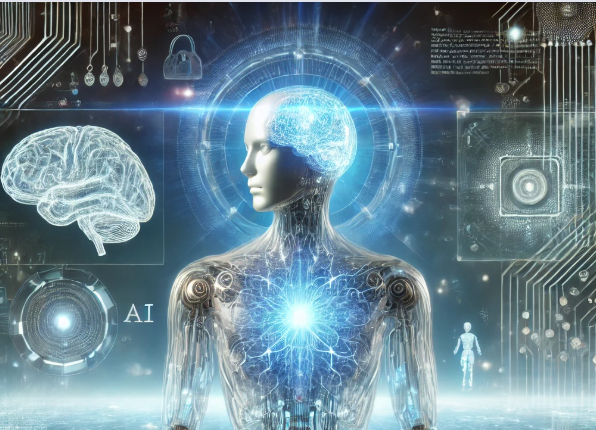Artificial General Intelligence (AGI) represents a groundbreaking frontier in the field of artificial intelligence. Unlike narrow AI, which is designed to perform specific tasks such as facial recognition or language translation, AGI aims to replicate the broad cognitive capabilities of human intelligence. The concept of AGI has intrigued researchers and technologists for decades due to its potential to revolutionize industries, solve complex global challenges, and even reshape human existence. However, the journey toward achieving AGI is filled with technical, ethical, and philosophical challenges.
What is AGI in Artificial Intelligence
AGI, or Artificial General Intelligence, refers to AI systems capable of understanding, learning, and applying knowledge across a wide range of tasks at a level comparable to human intelligence. Unlike current AI systems, which are task-specific, AGI would possess the ability to adapt to new environments, reason abstractly, and exhibit creativity. Essentially, AGI aims to mirror the flexibility and versatility of the human mind.
One of the key characteristics of AGI is its ability to generalize knowledge. For example, while a narrow AI system trained for image recognition cannot apply its learning to a different domain like language translation, AGI would seamlessly transition between such tasks. This level of adaptability makes AGI a critical milestone in the field of AI. Researchers believe that achieving AGI would require significant advancements in machine learning algorithms, computational power, and neuroscience-inspired architectures.
Despite its promise, AGI remains theoretical and raises numerous ethical concerns. Questions about control, misuse, and its impact on society must be addressed before AGI becomes a reality.
How AGI Differs from Narrow AI
The primary distinction between AGI and narrow AI lies in their scope and capabilities. Narrow AI systems are designed to excel at specific tasks but lack the ability to generalize their learning. For example, a chatbot powered by natural language processing can have engaging conversations, but it cannot identify objects in an image without additional training.
AGI, on the other hand, aims to replicate the human brain’s ability to handle diverse problems. While narrow AI requires task-specific datasets and training, AGI would have the capability to learn new tasks without extensive retraining. This generalization is what makes AGI potentially transformative.
Another critical difference is adaptability. Narrow AI operates within predefined boundaries and struggles with unexpected scenarios, whereas AGI would be capable of improvising and finding solutions to unfamiliar problems. However, this adaptability comes with significant technical challenges, such as creating algorithms capable of understanding context and reasoning abstractly.
The debate between AGI and narrow AI often revolves around feasibility and utility. While narrow AI continues to yield practical applications, the pursuit of AGI represents a long-term vision for achieving true artificial intelligence.
How Close Are We to Achieving AGI
The question of how close we are to achieving AGI remains a topic of intense debate among experts. While significant strides have been made in machine learning, neural networks, and computational power, AGI still eludes researchers due to its inherent complexity.
One major hurdle is understanding human cognition. While current AI systems can mimic certain aspects of human intelligence, such as pattern recognition or decision-making, they lack the holistic understanding required for general intelligence. Researchers believe that bridging this gap will require insights from neuroscience, psychology, and other interdisciplinary fields.
Another challenge is the lack of scalable computational resources. AGI would require immense processing power and data to function effectively. Current AI models, such as DeepSeek GPT or AlphaGo, already push the limits of hardware capabilities, and AGI would demand even more advanced infrastructure.
Despite these challenges, many believe AGI could become a reality within the next few decades. However, this timeline is speculative and depends on breakthroughs in fundamental research and ethical safeguards.
The Ethical Concerns of AGI
The development of AGI raises profound ethical questions that must be addressed to ensure its safe and responsible use. One of the most significant concerns is control. If AGI were to surpass human intelligence, ensuring that it aligns with human values and goals would be critical.
Another ethical issue is the potential misuse of AGI. Like any powerful technology, AGI could be weaponized or used to exploit individuals and societies. Establishing global regulations and ethical frameworks will be essential to mitigate these risks.
Additionally, the impact of AGI on the job market is a pressing concern. While automation has already disrupted several industries, AGI could further accelerate job displacement. Preparing for this transition through education and policy changes will be crucial to avoid widespread economic inequality.
Finally, there is the philosophical question of AGI’s rights. If AGI achieves a level of consciousness, should it be granted rights and protections similar to humans? These debates underscore the need for a collaborative approach involving technologists, policymakers, and ethicists.
Conclusion
Artificial General Intelligence holds the promise of transforming industries, solving global challenges, and enhancing human capabilities. However, the road to AGI is fraught with technical hurdles and ethical dilemmas. Understanding what AGI is, how it differs from narrow AI, and the challenges associated with its development is crucial for navigating this rapidly evolving field.
As researchers and policymakers work toward achieving AGI, ensuring its alignment with human values and addressing its societal implications will determine whether it becomes a force for good or a source of disruption. The journey toward AGI is as much about solving technical challenges as it is about addressing the profound questions it raises about the future of humanity.






